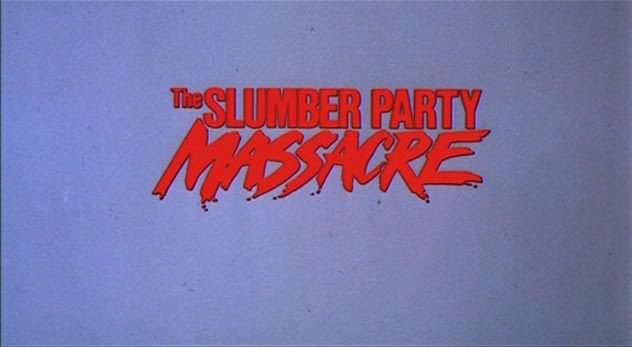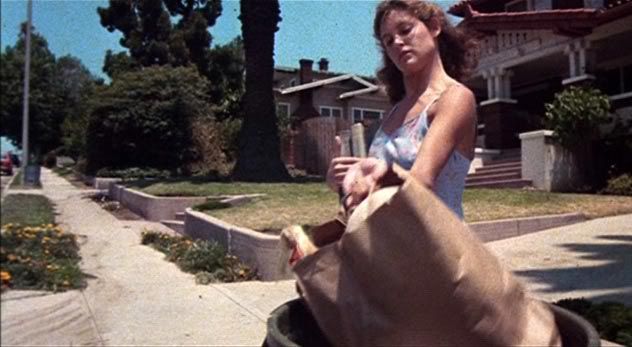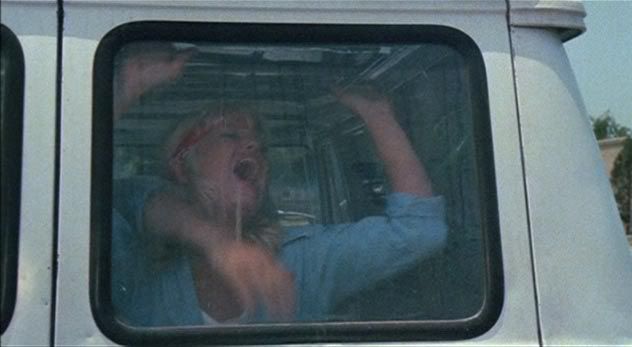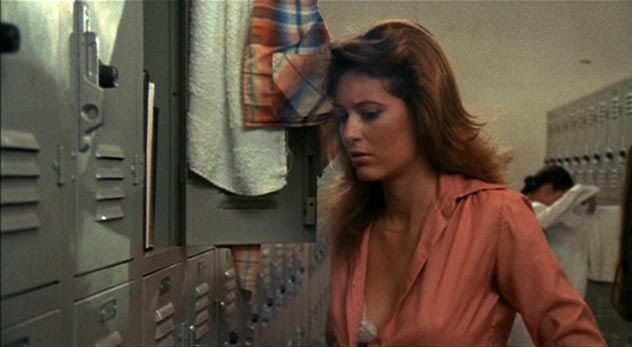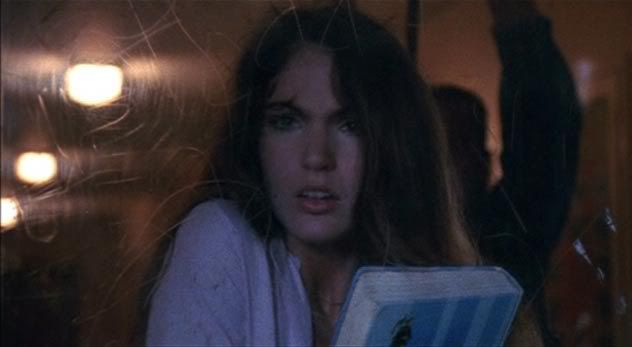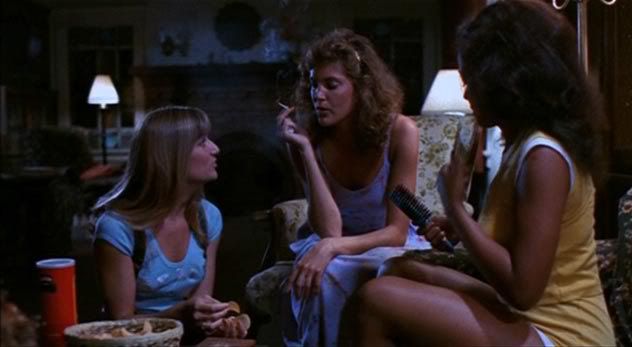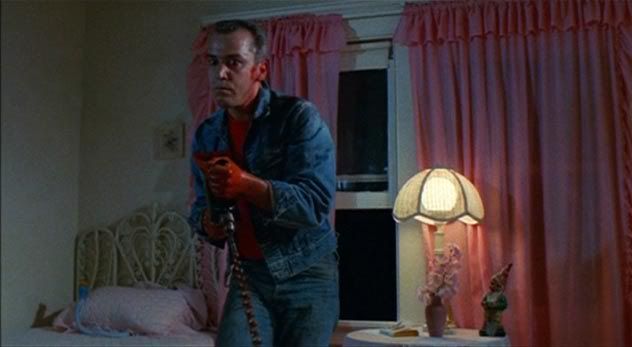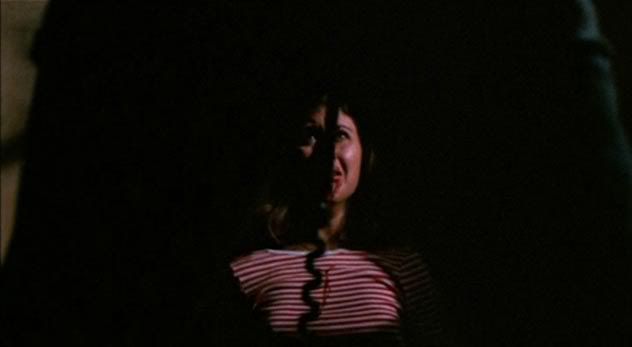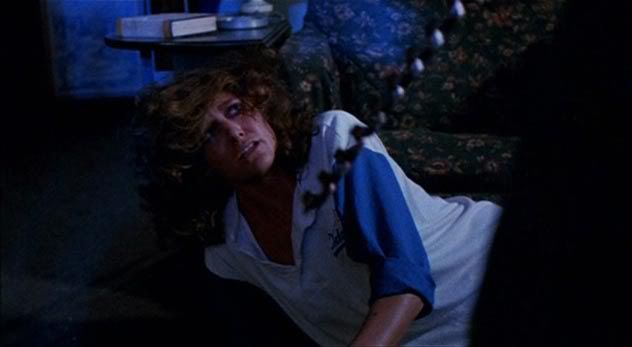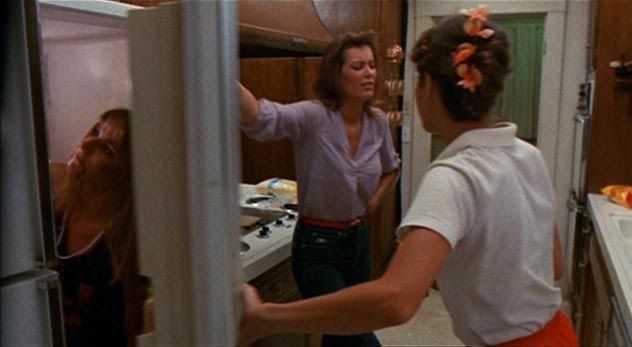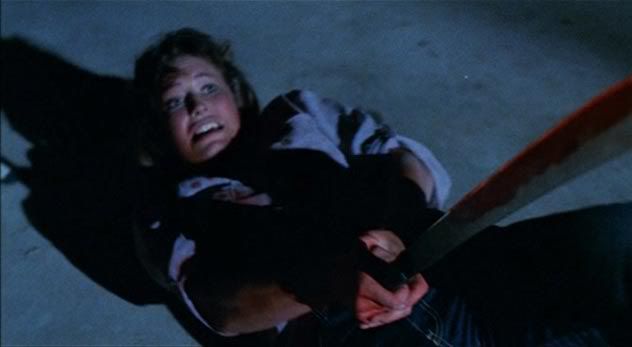One of the nice things about this internet of ours is how quickly and easily it can solve those little mysteries you’ve always wondered about, but were never before able to answer with any real satisfaction.
Case in point, the subject of today’s Sunday Thursday Horror Movie DVD Index—a film whose significance comes largely from its lack of significance. One of the few original early 80s slasher movies to have been written and directed by women, the film begs knowledgeable viewers to engage it as a work of feminist comment, but stymies such commentary by presenting the genre’s clichés without any significant irony or insight.
I always wondered why the film’s screenwriter, Rita Mae Brown, and its director, Amy Holden Jones, decided to take no advantage of their unique-for-the-genre perspective and instead chose to make a by-the-numbers reproduction of the slasher template. What I did not know and only learned as I started to do a little bit of research for this post, was that though Brown received sole credit for the film’s screenplay, the draft she wrote was completely different in tone from the script that was eventually filmed. Brown originally wrote the film as a satire of slasher movies, but as the script was revised by a handful of uncredited writers the satire was (mostly) lost and the film ceased to be an ironic commentary on the genre and instead became a typical representation of it.
To which I say:
Case in point, the subject of today’s Sunday Thursday Horror Movie DVD Index—a film whose significance comes largely from its lack of significance. One of the few original early 80s slasher movies to have been written and directed by women, the film begs knowledgeable viewers to engage it as a work of feminist comment, but stymies such commentary by presenting the genre’s clichés without any significant irony or insight.
I always wondered why the film’s screenwriter, Rita Mae Brown, and its director, Amy Holden Jones, decided to take no advantage of their unique-for-the-genre perspective and instead chose to make a by-the-numbers reproduction of the slasher template. What I did not know and only learned as I started to do a little bit of research for this post, was that though Brown received sole credit for the film’s screenplay, the draft she wrote was completely different in tone from the script that was eventually filmed. Brown originally wrote the film as a satire of slasher movies, but as the script was revised by a handful of uncredited writers the satire was (mostly) lost and the film ceased to be an ironic commentary on the genre and instead became a typical representation of it.
To which I say:
WHEW!
Thank Yahweh we dodged that bullet, because if there’s anything worse than a bad slasher movie, it’s a bad slasher movie parody and—based on the few satiric elements that managed to survive the various rewrites—I suspect that’s exactly what the film would have been if Brown’s draft had been made. As directed by Jones the film is a taut, well made slasher classic that is smart enough to realize that sympathetic characters equals effective tension and benefits greatly as a result.
I am, of course, talking about:
I am, of course, talking about:
In truth it is a bit disingenuous of me to claim that there are no examples of potential feminist commentary in the film, but those moments that do make it into the movie bear little distinction from similar scenes in other films made by (if the popular feminist critique of the genre is to be believed) supposedly misogynistic male filmmakers. A good example of this is the brief sequence that opens the film in which Trish (Michele Michaels), the first of the film's two potential Final Girls, goes through her room and disposes of the items that represent her childhood, including a Barbie doll, a slinky and various other toys. Having become what she considers to be a woman, she no longer wishes to cling to these reminders of the girl she once was. But her conviction is not an absolute one, as she does decide to hold onto at least one stuffed animal she cannot bear to include with the other items destined for the garbage can. Watching this brief scene one gets the sense it's supposed to be at least a little bit important, but--apart from being a nice character moment--it ultimately adds nothing to the picture and is not further developed into any kind of notable theme.
Actually I lied, the scene does add something to the film, since it is as Trish is gathering up her old toys that we hear a newscaster on the radio announce that police are on the lookout for an escaped killer named Russ Thorn. Apparently Russ is eager to reclaim his old ways, as he appears in the next scene, where he pulls an unusually shapely phone company employee into her van and kills her with a very large (and very unsubtle) electric drill. In this way TSPM represents the purest kind of slasher movie, in that it makes no attempt to disguise itself as a mystery and is only too happy to identify its killer right from the very beginning of the movie. Following the linewoman's shocking demise, the movie cuts to a girl's basketball sequence that can only be described as--WAIT!--why should I bother wasting valuable brain cells attempting to describe it, when I can just let you watch the scene yourself? (God bless you internet--truly you are the greatest boon we lazy-ass writers could ever hope to have been given!)
One Word:
Jiggletastic!
Now in a normal slasher movie, this basketball sequence and the lengthy group shower scene that immediately follows it, wouldn't seem the slightest bit odd or out of the ordinary, but when viewed with the knowledge that they were directed by a female filmmaker, they seem just a tad off-kilter. The tightness of the uniforms takes on the air of almost-satirical exaggeration, while the slow-panning of the camera as it moves across the sloping curves of the actresses' naked, soapy buttocks gives the impression that Jones is attempting to supply her own withering deconstruction of the Predatory Male Gaze of the Camera's Eye. The problem with this analysis, however, is that it is impossible to tell how much (or if any) of this is intended and how much comes from our desire as an enlightened viewer to assume that a female director would not be so crass as to fill her film with the requisite T&A without at least trying to meet her obligation with some form of deliberate spin.
In terms of the actual plot, the sequence does a good job of setting up the dynamics of its main female characters. Trish, who we met earlier, is the kind, sympathetic girl who is planning on throwing a slumber party that night. Valerie (Robin Stille --an extremely attractive actress of admittedly limited talent whose 1996 suicide serves as further proof of my thesis that the IMDb is the most depressing website on the planet) is the beautiful new girl, whose perfection has alienated her from her new classmates, especially Diane (Gina Simka), the snob with the perpetually turned up nose who is far too self-centered to be alive at the end of the movie. And joining Diane on the doomed list is Kim (Debra Deliso), the vaguely tomboyish blond, Jackie (Andree Honore), the black girl and Linda (Brinke Stevens) the skinny brunette whose butt gets the most attention in the shower scene, but who doesn't even make it out of the school--much less to the slumber party.
After Linda's drill-induced decision to shuffle off this mortal coil, the movie spends the next few minutes introducing the rest of the victims/characters, before it gets to the sweet slumber party action that one assumes is its raison d'etre. Most important of these is Val's 12 year-old sister Courtney (Jennifer Myers), who spends most of her screen time ogling a copy of Playgirl, providing far too many false-scares to keep track of and inspiring the future writer/director of the film's 1987 sequel to place her at the center of that movie's memorably wacky dreamscape.
Naturally, once the party gets underway (during which beer is imbibed, cannabis is inhaled and nighties are slipped into) Russ decides to join the fun and quickly (literally given the movie's abbreviated 75 min running time) drills his way through the relevant cast members. With the exception of the scenes where a hungry Jackie lifts and eats a piece pizza off of the back of the murdered delivery boy and the one where Val's first attempt at an offensive attack is stymied by the shortness of her extension cord, the film resists any signs of obvious comedy or satire. Considering how short the film is, Jones actually does a commendable job establishing a sense of suspense and tension, largely because she has managed to make us like some of these characters and thus makes their situation horrifying and tragic, rather than karmically just. That said, she is unable to resist the temptation to provide the kind of obvious symbolic imagery the murderer's weapon of choice (perhaps too) easily provides:
Despite playing mostly by all of the rules, TSPM does deviate slightly from the formula in that it presents two of its characters as possible Final Girls and waits until the film's final moments both deciding who is going to earn this important honorific. Though both characters survive the night, Trish remains more a victim, while Val clearly establishes herself as the capable heroine who gets the job done.
In the final analysis, I believe one could argue that the reason Jones elected to not make her debut movie a work of overt feminism is because she was smart enough to understand that despite its unjust reputation for misogyny the slasher formula is one that openly embraces the concepts of female empowerment. One need only look at the most important of the genre's archetypes and appreciate that there is a very good reason that it is virtually never referred to as the "Final Boy".
Slasher Movie Statistics
Body Count: 11 (six women and five men, which--interestingly--makes it one of the rare slasher movies in which female victims outnumber the males)
Shower Scenes: 1 (and it's a long one)
Instances of Nakedity: 8 (7 and 1/2 if I wanted to get all pissy and deduct half a point for use of an obvious body double)
Obligatory Has Beens: N/A
Instruments of Death: Electric Drill, Butcher Knife and Machete.
Creepy (and therefore suspicious ) Old Guys: 0
References to Pot: It's a slumber party in a movie from the 80s! You expect me to keep count?
Amount of Time Required to Correctly Identify Killer: N/A
Cheesy References to Other Horror Movies: Val spends some time watching a horror movie I couldn't identify on TV.
Number of Seriously Awesome All-Girl Basketball Scenes That the Folks Who Run the WNBA Would Be Wise to Watch: 1
Utterly Pointless Trivia: Amy Holden Jones is married to the guy who shot Raging Bull and also--more importantly--directed Clan of the Cave Bear.
Final Girl Rating: 7 (out of 10)
